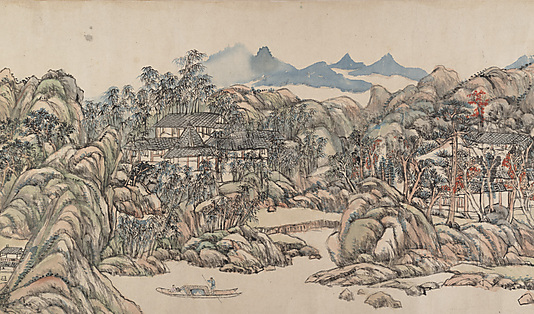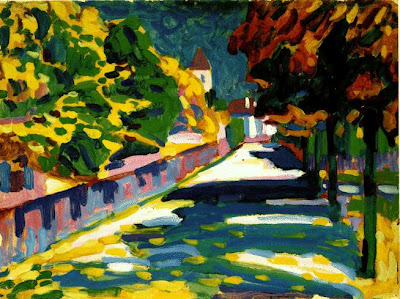In 2008, a show garden design at the Chelsea Garden Show envisioned a courtyard garden set fifty years in the future, designed for global warming. The garden assumes a somewhat hotter and sometimes wetter London than today, incorporating lush planting and cooling water canals under dappled shade.
The garden designed by Robert Meyers is assumed to be largely enclosed to the sides and rear by buildings, and visible from the street through implied railings at the front. The 'buildings' are represented by planted green walls divided into panels by strips of pre-cast stone. This references the emerging possibilities of the green architecture of the future. There is a double-layered tree canopy, created with tall palms, smaller sculptural trees, and a high proportion of evergreens.
According to Cornell University’s agricultural extension office, “a gradual increase in Earth’s atmospheric greenhouse gases is expected to make global weather more volatile over the next century. This might include higher temperatures, less rain but heavier downpours, changing wind patterns, and rising sea levels. Higher temperatures and more turbulent weather will affect everything — from which trees to which wildlife cover the region to what crops farmers raise to how cities allocate water. Weather unpredictability would make dry years more common and wet years less effective. The result could be more reliance on rain-intensive crops or more garden watering."
Extension Horticulturists have urged caution in accepting these new zones, because hardiness is influenced by rainfall, plant vigor, and drought as well as minimum winter temperatures. With global warming comes habitat conversion, pollution, an increase in invasive species. It is the combination of all these stresses that will likely prove to be the greatest challenge to wildlife conservation in the forthcoming years.
Countering landscape and garden risk with evolving climate may be achieved by purchasing smaller herbaceous plants and shrubs that are recommended for a warmer zone.
The use of native and adapted vegetation in the built environment, taking full advantage of the most appropriate plants that increase air quality, conserve water resources, and sequester carbon dioxide.
Traditional turf lawns contribute to global warming in multiple ways through: 1. The decomposition of lawn waste, which turns to methane gas as opposed to composting, 2. Using fossil-powered machinery to maintain it (mowers and leaf blowers), 3. Fossil energy used to pump water to irrigate and fossil energy used to produce fertilizers and pesticides. Native plants are significantly more effective than traditional mowed grass as a carbon sink due to their extensive root systems and increased ability to retain and store water.
I’m curious… how do you envision residential landscapes in the future? Did Robert Meyers accurately portray this? Please leave your thoughts…



















